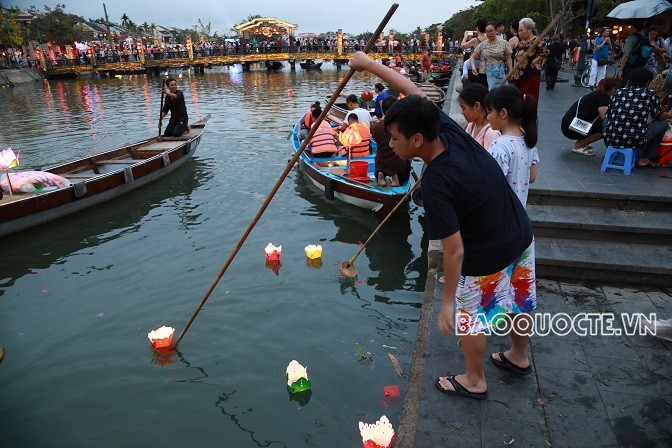
Hoi An introduces updating admission fees to Old Quarter
Latest
 |
| Tourists in the Old Quarter of Hoi An. (Photo: Trung Hieu) |
The one-time entrance fee will be 80,000 VND (3.41 USD) for domestic visitors and 120,000 VND (5.12 USD) for foreigners.
Ticket collection for tourists visiting the ancient town began in 1995, and the city decided to increase the ticket price in 2012 (80,000 VND for Vietnamese and 120,000 VND for foreigners).
In 2020-21, ticket collection was suspended due to the COVID pandemic, and only restarted in 2022, but at 50% discount.
However, many tour companies are circumventing the requirement to buy tickets, leading to losses.
According to the city's officials, 85% of the revenue generated from ticket sales will be used for preservation, management, and owners of relics and heritage houses.
Nguyen Van Lanh, Vice Chairman of the city People's Committee, said that the ticket would permit tourists to visit three to six locations in the 4.2 square kilometre core area of the Old Quarter, which includes 1,273 ancient relics, temples, pagodas, and ancient houses.
He said 932 relics (84%) in the old town belong to individuals or collectives, and the cost for annual restoration and preservation is still limited.
Vice Chairman Lanh said the city reserves from 50% to 70% of ticket revenue to assist old house owners in repairing their properties after annual floods and storms.
"At least 65 heritage relics have yet allocated funds for restoration, including 20 in ruins that could collapse any time," Vice Chairman Lanh said. "Meanwhile, the city has only a preservation fund generated from ticket sales."
"Instead of waiting for the city's financial support, old houses owners paid 1 trillion VND for repairing and protecting old architectures, which served tourism in the Old Quarter for decades."
The Vice Chairman said that ticket sales suffered at least a 40% loss as numerous visitors evaded buying tickets.
He blamed many travel agencies for intentionally neglecting to buy tickets for their visitors, even though entrance ticket costs are included in the tour service.
The city also set up a free entrance for residents living in the Old Quarter and another for travellers. However, guides or tour operators irresponsibly show tourists through the Old Quarter entrance, Vice Chairman Lanh said.
The city also issued all-time package entrance tickets for long-day stay tourists in the town, and different promotions with easy visits.
A group of 15 travellers will be given one free ticket, while those under-16 will be exempt.
Visitors can enjoy night performances in the old streets, traditional cuisine and lifestyle of the local community, and shopping.
Hoi An had already successfully launched community tourism activities, such as farming, fishing, boat rides and biking, cultural performances, outdoor exhibitions and photo displays from ticket sales to attract tourists visiting the town.
Free tickets for tourists visiting the ancient town are allowed on the occasion of Heritage Day (December 23) and the anniversary of Hoi An’s recognition as a world heritage site by UNESCO.
According to the latest report, Hoi An hosted more than 1.5 million tourists, including 600,000 foreigners, in 2022.
A series of positive activities have been organised from ticket income, including expanding the area of walking streets outside of the Old Quarter, night market, and non-engined vehicle streets since 2002.
Walking streets often open from 8am to 11am and from 3pm to 10pm. Motorbikes or engined vehicles are only allowed access for four hours per day and at night time.
The UNESCO World Heritage site was the first city in Vietnam to host a Car Free Day and the first location in the central province to launch the 3-R (reduce, reuse and recycle) programme, promoting the use of reusable bags as well as the operation of a solar-powered lighting system in the city's square.
The city plans to promote bicycle use among public agencies and residents, with a goal of 100,000 local bicycles.
The town had hosted a record 5.35 million tourists, including 4 million foreigners, in 2019, but the figure declined sharply during more than two years of COVID-19 pandemic.

















